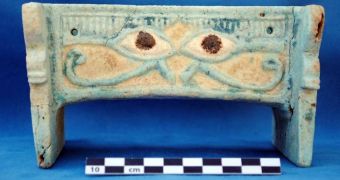People who lived in present-day Sudan many centuries ago were no strangers to gluttony and probably saw nothing wrong with it, freshly unearthed archaeological evidence indicates.
Thus, a recent book announces the discovery of an ancient party tray in a cemetery estimated to be about 2,000 years old. The book, dubbed “Excavations in the Meroitic Cemetery of Dangeil, Sudan,” is available online.
This party tray comprises seven bowls attached to one another. Of these bowls, one sits in the middle, and the other six are all arranged around it, archaeologists explain. It is believed that, thousands of years ago, it was used to serve food.
“It's very unique, and we don't have any kind of similar object found anywhere else. It can be used for food. You can put seven different items in one place,” said researcher Mahmoud Suliman Bashir, as cited by Live Science.
The archaeologist and his colleagues detail that the ancient cemetery where this party tray was found sits fairly close to the Nile River. It was discovered back in 2002 by villagers, and researchers have been excavating it ever since.
The cemetery is believed to have been left behind by members of a long-lost kingdom named Kush. Despite the fact that the Kushites erected hundreds of pyramids in their heydays, this cemetery only comprises underground tombs.
Apart from the party tray, specialists exploring this archaeological site have until now recovered a silver ring decorated with the image of a god, jars that likely served to hold beer made of a plant dubbed sorghum, and a beautifully decorated box.
This box, a photo of which is available next to this article, is made of faience, and it has several large eyes painted on its sides. These drawings are believed to have served as protection against the evil eye, i.e. a human look believed to cause harm.
Interestingly enough, the remains of a man believed to have been an archer during his lifetime have also been found in this part of present-day Sudan. The claim that this individual used to be an archer is based on the fact that, when found, he had a stone ring on his thumb.
Thus, historians explain that, in ancient times, those who settled on embracing this career wore one such piece of jewelry in order to have an easier time using their weapon of choice. As Mahmoud Suliman Bashir put it, “Thumb rings are well-known objects associated with archery, being used to draw back the bowstring.”
Despite the fact that this 2,000-year-old cemetery was first discovered well over a decade ago, it appears that archaeologists are nowhere near done excavating it. In fact, specialists say that they haven't even managed to figure out how many tombs sit in this region.

 14 DAY TRIAL //
14 DAY TRIAL //